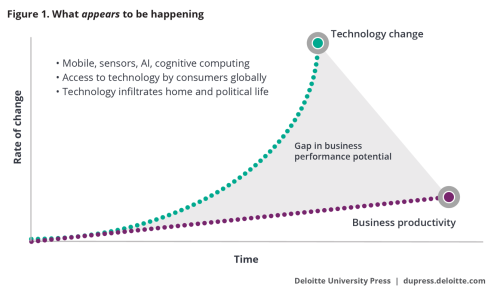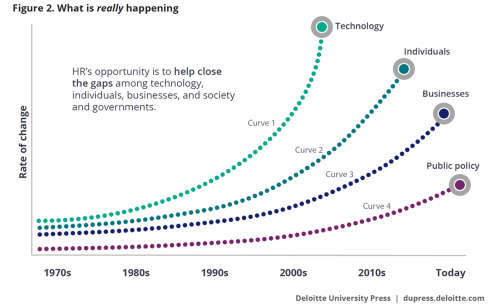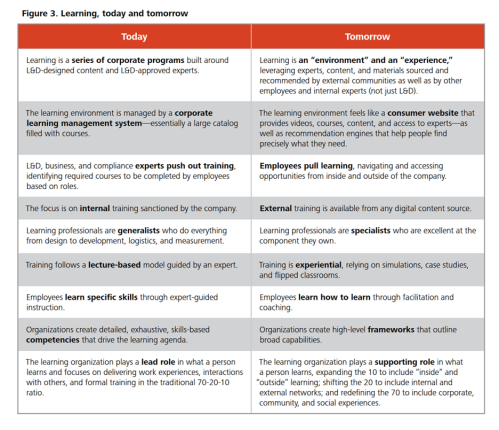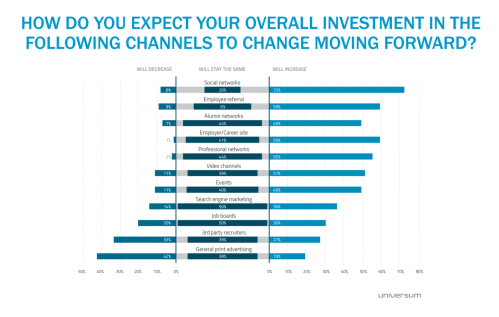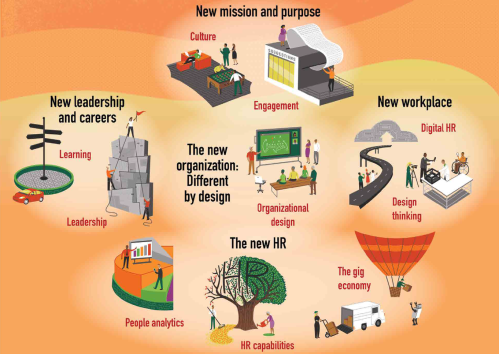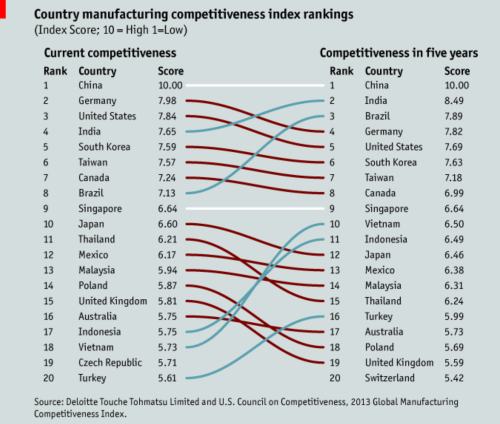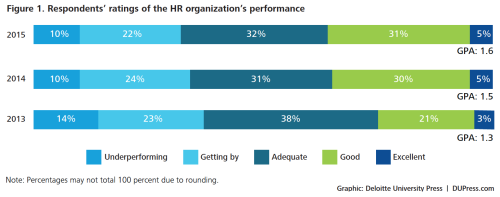
Deloitte’s annual human capital report was just published. I look forward to this one every year because it’s backed by a massive amount of data collection and analysis, it’s easy to read, it always throws at least one curve ball, and there’s a TON of useful information. This may be the most on point, useful research report published for leaders each year. At 144 pages, Rewriting the Rules for the Digital Age is not a quick read, but it’s a must read for every HR professional – regardless of the size of your organization. Whether you’re a department of one, a depart of 10, or a department of hundreds of thousands, the trends captured by Deloitte’s survey and discussions need to be on your radar. Period.
Each year the survey identifies the top 10 human capital trends that should be shaping organizational decision- and policy-making, investments, budgets and leadership behavior. This year they are:
Trend 1 The Organization of the Future: Arriving Now
Trend 2 Careers and Learning: Real Tim, All the Time
Trend 3 Talent Acquisition: Enter the Cognitive Recruiter
Trend 4 The Employee Experience: Culture, Engagement, and Beyond
Trend 5 Performance Management: Play a Winning Hand
Trend 6 Leadership Disrupted: Pushing the Boundaries
Trend 7 Digital HR: Platforms, People, and Work
Trend 8 People Analytics: Recalculating the Route
Trend 9 Diversity and Inclusion: The Reality Gap
Trend 10 The Future of Work: The Augmented Workforce
As you look at these trends, don’t you think to yourself, “you could write a whole book on each topic!”? Well, I did. But the good news is, after the introduction, there is a whole chapter on each trend with data, analysis, heat maps, graphs – all the goodies you’d expect.
But here are two graphs from the Introduction, Rewriting the Rules for the Digital Age, that sets the context for everything that follows. If you’re like me, you’ll do a bit of a head smack when you see these and say to yourself, “Yep. That’s exactly how it’s working. Or not.”
These make so much sense and really underscore HR’s role in leading all organizational leaders to consider the broader context of what technology can – and must – mean in the coming years.
I don’t want to give away the store here, so I won’t share more of the research and conclusions. Read the trends analysis yourself. See how you would prioritize the 10 trends and make a plan. Time to roll up your sleeves! Remember that old saying, that the future is now? Well, in this context, it’s true.

